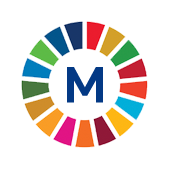 10.2.1 Proportion of people with a disposable income below 50% of median equivalized income, by type of settlementsMetadataPeriod: AnnualYear: 2025 |
 10.2.1 Proportion of people with a disposable income below 50% of median equivalized income, by type of settlementsMetadataPeriod: AnnualYear: 2025 |
| METADATA |
| Indicator information |
| Definition and methodology |
| Data source type and data collection method |
| Notes |
| ID of global indicator |
| Metadata update |
| Global metadata |
| Indicator information | Top |
| Indicator | |
10.2.1 Proportion of people with a disposable income below 50% of median equivalized income, by type of settlements | |
| Global indicator name | |
10.2.1 Proportion of people living below 50 per cent of median income, by sex, age and persons with disabilities | |
| Target | |
10.2 By 2030, empower and promote the social, economic and political inclusion of all, irrespective of age, sex, disability, race, ethnicity, origin, religion or economic or other status | |
| Goal | |
Goal 10. Reduce inequality within and among countries | |
| Definition and methodology | Top |
| Definition | |
The proportion of people living in households whose disposable income is less than half of median equivalised income. | |
| Methodological explanations | |
The indicator is calculated on the basis of information obtained from the EU-SILC (SILC - Survey on Income and Living Conditions) survey. Survey subject are households and persons aged 16 and more in households. More detailed information about the survey can be found at https://www.stat.gov.rs/en-US/oblasti/potrosnja-prihodi-i-uslovi-zivota/prihodi-i-uslovi-zivota.
The aim of the survey is to collect comparable data on people at risk of poverty or social exclusion, income distribution and monetary poverty, living conditions and material deprivation. Data are used to obtain structural social indicators at the level of the Republic of Serbia and are internationally comparable. Statistical Office of the Republic of Serbia implements EU-SILC survey from 2013. Data for the Republic of Serbia are published in the Eurostat database and have been available since 2013.
A household means any family or other community of persons who live together and jointly spend funds for meeting their basic life needs (food, housing, etc.), regardless of whether all members are permanently at the place where the household resides or some of them temporarily reside in some other place in the country or abroad on account of work, education or for some other reason.
Household income does not include income in kind. The income reference period is the previous calendar year.
Equivalised income is the total household disposable income evenly distributed among the members of the household according to the modified OECD (Organization for Economic Co-operation and Development) equivalence scale. In accordance with this scale, first adult member of the household receives the value of 1, other adults aged 14 and over 0.5, and children under the age of 14 receive value 0.3. So, for example, for a household consisting of two adult household members and two children aged five and eight, the equivalent household size is: 1 + 0.5 + 2*0.3 = 2.1. For this household, the equivalent household disposable income is obtained by dividing the total disposable income of that household by the equivalent household size, here the value 2.1. | |
| Method of calculation | |
The ratio of number of persons living in households whose equivalised disposable income is lower than 50% of the median equivalised national income and total population, for the observed measurement level. | |
| Unit of measure | |
% | |
| Available disaggregation | |
Type of area | |
| Territorial level | |
Serbia north, Serbia south | |
| Data source type and data collection method | Top |
| Data source | |
Statistical Office of the Republic of Serbia | |
| Periodicity of data collection | |
Annual | |
| Notes | Top |
Starting from 1999, the Statistical Office of the Republic of Serbia has not at disposal and may not provide available certain data relative to AP Kosovo and Metohija, and therefore these data are not included in the coverage for the Republic of Serbia (total). | |
| ID of global indicator | Top |
C100201 | |
| Metadata update | Top |
| 30/5/2025 | |
| Global metadata | Top |
https://unstats.un.org/sdgs/metadata/files/Metadata-10-02-01.pdf | |